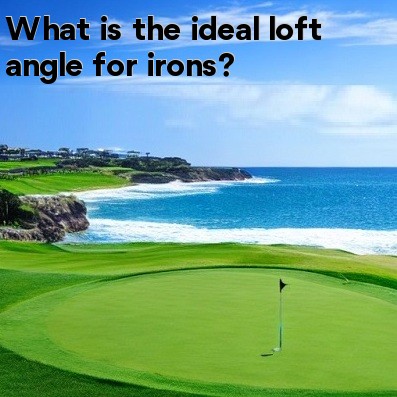
In Golf: What is the Ideal Loft Angle for Irons?
Golfers often wonder what the ideal loft angle is for their irons. The loft angle plays a crucial role in determining the distance and trajectory of the ball. Different irons have varying loft angles, and understanding which angle to use can greatly improve your game.
The Basics of Loft Angle
The loft angle refers to the angle of the clubface relative to an imaginary vertical line. The higher the loft angle, the higher the ball will launch into the air. Irons with higher loft angles tend to have a steeper descent and produce more backspin, while irons with lower loft angles create a flatter trajectory with less spin.
Factors to Consider
- Skill Level: The ideal loft angle may vary depending on your skill level and swing speed. Generally, beginners and slower swing speed players benefit from using irons with higher loft angles as they provide more forgiveness and launch the ball higher. Experienced players with faster swing speeds may prefer irons with lower loft angles for better control and distance.
- Course Conditions: The condition of the golf course can also influence your choice of loft angle. If you are playing on a course with firm fairways and in windy conditions, lower lofted irons may be more advantageous as they generate a flatter trajectory and reduce the impact of the wind. On the other hand, in softer conditions, higher lofted irons can help the ball stop quickly on the greens.
- Desired Shot Shape: The type of shot you want to hit can also determine the ideal loft angle. If you want to hit a higher shot that lands softly, using irons with more loft can help achieve that. Conversely, if you are looking for a lower, penetrating shot, using irons with lower loft angles can assist in achieving that trajectory.
Common Loft Angles
Irons typically range from a 2-iron to a pitching wedge (PW) or gap wedge (GW). Each iron has a different loft angle, and understanding the range can help you choose the right club for each situation. Here is a general guide to the loft angles commonly found in irons:
- 2-iron: 18-20 degrees
- 3-iron: 21-24 degrees
- 4-iron: 24-28 degrees
- 5-iron: 27-32 degrees
- 6-iron: 31-36 degrees
- 7-iron: 35-40 degrees
- 8-iron: 39-44 degrees
- 9-iron: 43-48 degrees
- PW/GW: 47-53 degrees
It's important to note that these loft angles can vary slightly depending on the manufacturer and specific iron model.
Fitting and Customization
To determine the ideal loft angle for your irons, it's recommended to get fitted by a professional club fitter. A club fitting takes into account various factors such as your swing speed, attack angle, and personal preferences. A professional can help you find the right loft angles that suit your game and optimize your performance.
Final Thoughts
Choosing the ideal loft angle for your irons is essential to optimize your shot trajectory, distance, and control. Factors such as skill level, course conditions, and desired shot shape should be considered when selecting the right loft angle. Getting fitted by a professional can provide personalized recommendations to help you improve your game.





